Your cart is currently empty!
Month: November 2023
-

Creating an Effective Email Capture Landing Page:
The Ultimate GuideAn email capture landing page is a dedicated web page designed to capture the email addresses of visitors who are interested in your products or services. It serves as a valuable tool for affiliate marketers to build their email lists and establish direct communication with potential customers. By collecting email addresses, affiliate marketers can nurture leads, promote their offerings, and drive conversions.
Having an effective email capture landing page is crucial for the success of any affiliate marketing campaign. It allows you to directly reach out to interested individuals and build a relationship with them. With a well-designed landing page, you can capture valuable leads and convert them into loyal customers.
Statistics show that email marketing continues to be one of the most effective digital marketing strategies. According to a report by Statista, the number of email users worldwide is projected to reach 4.48 billion by 2024. Additionally, a study by DMA found that for every $1 spent on email marketing, the average return on investment (ROI) is $42.
These statistics highlight the immense potential of email marketing and the importance of creating an effective email capture landing page. We will explore the key elements and strategies to help you create a high-converting landing page that maximizes your email capture efforts.
Table of Contents
Understanding the Purpose of an Email Capture Landing Page
An email capture landing page serves as a powerful tool for affiliate marketers to capture the email addresses of potential customers. The primary goal of this landing page is to encourage visitors to provide their contact information, particularly their email addresses. By doing so, affiliate marketers can build a valuable email list that allows them to establish direct communication with their target audience.
Building an email list offers numerous benefits for affiliate marketers:
- Direct Communication: Having a list of email subscribers enables you to communicate directly with your audience. Unlike social media platforms or search engines, where algorithms can limit your reach, email allows you to have a direct line of communication with your subscribers.
- Targeted Marketing: With an email list, you have the opportunity to segment your subscribers based on their interests, demographics, or previous interactions. This allows you to send targeted and personalized marketing messages, increasing the chances of engagement and conversions.
- Increased Conversions: Email marketing has consistently proven to be one of the most effective channels for driving conversions. According to a study by Campaign Monitor, email marketing has an average conversion rate of 6.05%, compared to 1.9% for search and 1.1% for social media.
- Cost-Effective: Compared to other marketing channels, email marketing is relatively cost-effective. With the right email marketing platform, you can reach a large number of subscribers without incurring significant expenses.
- Relationship Building: Email allows you to build a relationship with your subscribers over time. By consistently providing value through informative content, exclusive offers, and personalized recommendations, you can establish trust and loyalty with your audience.
These benefits highlight the importance of building an email list for affiliate marketers. By capturing email addresses through an effective landing page, you can leverage the power of email marketing to drive engagement, conversions, and long-term success.
Designing a High-Converting Landing Page
When it comes to designing an email capture landing page, the visual appeal and user-friendliness of the page play a crucial role in capturing the attention and interest of visitors. A well-designed landing page not only enhances the overall user experience but also increases the chances of conversion.
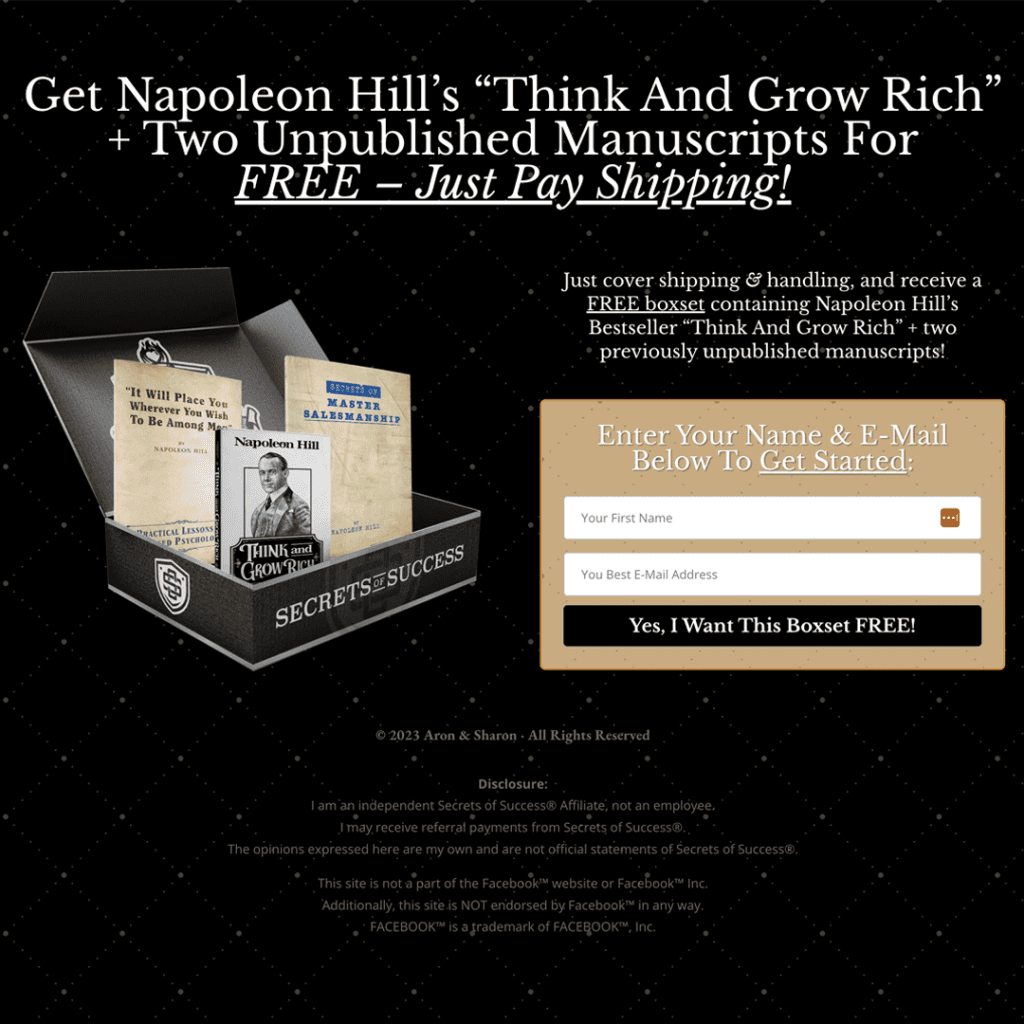
Importance of a visually appealing and user-friendly design:
A visually appealing design helps create a positive first impression and grabs the attention of visitors. According to a study by Adobe, 38% of people will stop engaging with a website if the content or layout is unattractive. Therefore, it is essential to invest in a visually appealing design that aligns with your brand and captures the interest of your target audience.
A user-friendly design ensures that visitors can easily navigate through the landing page and complete the desired action, which in this case is providing their email address. A study by Nielsen Norman Group found that users often leave a website within the first 10-20 seconds if they cannot find what they are looking for. Therefore, it is crucial to create a seamless user experience that guides visitors towards the email capture form.
Key elements to include in an email capture landing page:
When designing an email capture landing page, there are several key elements that you should include to maximize its effectiveness:
Element Description Headline A compelling and attention-grabbing headline that clearly communicates the value proposition of your offering. Subheadings Informative subheadings that provide additional details and entice visitors to continue reading. Visuals High-quality images or videos that support your message and capture the interest of visitors. Call-to-Action A clear and prominent call-to-action button that directs visitors to the email capture form. Social Proof Testimonials, reviews, or social media mentions that build trust and credibility. Benefits A list of the benefits or value that visitors will receive by providing their email address. Form Fields A concise and straightforward email capture form that asks for minimal information. Best practices for layout and formatting:
When it comes to the layout and formatting of your email capture landing page, there are several best practices to keep in mind:
- Keep the design clean and uncluttered, with ample white space to enhance readability.
- Use a responsive design that adapts to different screen sizes and devices.
- Place the most important elements, such as the headline and call-to-action, above the fold to ensure they are immediately visible.
- Use contrasting colors for the call-to-action button to make it stand out.
- Optimize the page loading speed to prevent visitors from leaving due to slow loading times.
By incorporating these design principles and best practices, you can create a visually appealing and user-friendly email capture landing page that effectively captures the attention and email addresses of your target audience.
Crafting Compelling Copy
When it comes to creating an effective email capture landing page, the copywriting plays a crucial role in capturing the attention and interest of visitors. Compelling copy helps convey the value proposition of your offering, persuades visitors to take action, and ultimately increases the conversion rate of your landing page.
Writing attention-grabbing headlines and subheadings:
The headline of your email capture landing page is the first thing that visitors will see, so it needs to be attention-grabbing and compelling. It should clearly communicate the value or benefit that visitors will receive by providing their email address. Use strong and persuasive language to capture their interest and make them want to learn more.
Subheadings are also important as they break up the content and provide additional information. They should be concise, informative, and entice visitors to continue reading. Use subheadings to highlight the key benefits or features of your offering and keep visitors engaged throughout the page.
Creating persuasive and concise content:
The content on your email optin page should be persuasive and concise. Use clear and compelling language to communicate the value of your offering and why visitors should provide their email address. Highlight the benefits they will receive, such as exclusive content, discounts, or access to a community.
Keep the content concise and to the point. Visitors have a limited attention span, so it’s important to convey your message quickly and effectively. Use bullet points or short paragraphs to make the content scannable and easy to read.
Additionally, it’s important to address any potential objections or concerns that visitors may have. Anticipate their questions and provide clear answers to alleviate any doubts. This helps build trust and increases the likelihood of visitors providing their email address.
Utilizing storytelling techniques to engage visitors:
Storytelling is a powerful technique that can engage visitors and make your email capture landing page more memorable. Use storytelling to create a connection with your audience and evoke emotions. Share success stories, case studies, or personal experiences that demonstrate the value of your offering.
By incorporating storytelling techniques, you can make your landing page more relatable and compelling. This can help visitors see the benefits of providing their email address and increase their trust in your brand.
If you craft attention-grabbing headlines, creating persuasive and concise content, and utilizing storytelling techniques, you can create compelling copy that captures the interest of visitors and increases the conversion rate of your email capture landing page.
Implementing Effective Lead Capture Forms
The lead capture form is a critical component of your email capture landing page. It is the gateway through which visitors provide their contact information, particularly their email addresses. Implementing an effective lead capture form involves careful consideration of its placement, visibility, form fields, and optimization for mobile devices.
Placement and visibility of the lead capture form:
The placement and visibility of your lead capture form can significantly impact its conversion rate. It’s important to strategically position the form on your landing page to maximize its visibility and encourage visitors to take action.
Consider placing the lead capture form above the fold, which means it should be visible without the need for scrolling. This ensures that visitors immediately see the form and are prompted to provide their email address. Additionally, you can also include the form at the end of the page for visitors who have read through the content and are ready to take action.
Furthermore, use design elements such as color contrast, whitespace, and directional cues to draw attention to the form. Make sure it stands out from the rest of the page and is easily distinguishable.
Choosing the right form fields and call-to-action:
The form fields you include in your lead capture form should strike a balance between gathering necessary information and minimizing friction for visitors. Asking for too much information can deter visitors from completing the form, while asking for too little may not provide enough data for effective lead nurturing.
Consider the following best practices when choosing form fields:
- Keep the number of form fields to a minimum, typically asking for just the name and email address.
- Use clear and concise labels for each form field.
- Consider using placeholder text within the form fields to provide additional guidance.
- Include a clear and compelling call-to-action button that prompts visitors to submit the form.
By optimizing the form fields and call-to-action, you can streamline the process for visitors and increase the likelihood of them providing their email addresses.
Optimizing the form for mobile devices:
It is crucial to optimize your lead capture form for mobile devices – you are probably reading this article on your phone, just to highlight the importance of optimisation ;). According to Statista, mobile devices accounted for 54.8% of global website traffic in the second quarter of 2021.
Ensure that your form is responsive and adapts to different screen sizes. Test the form on various mobile devices to ensure a seamless user experience. Consider using mobile-friendly input fields, such as dropdown menus or checkboxes, to make it easier for users to complete the form on their mobile devices.
By implementing an effective lead capture form with strategic placement, the right form fields, and optimization for mobile devices, you can maximize the conversion rate of your email capture landing page and capture valuable leads for your affiliate marketing efforts.
Optimizing for Conversion
Optimizing your email capture landing page for conversion is essential to maximize the number of visitors who provide their email addresses. By continuously improving your conversion rate, you can increase the effectiveness of your affiliate marketing efforts and drive more valuable leads. This section will explore the importance of A/B testing and data analysis, strategies for improving conversion rates, and the utilization of social proof and testimonials.
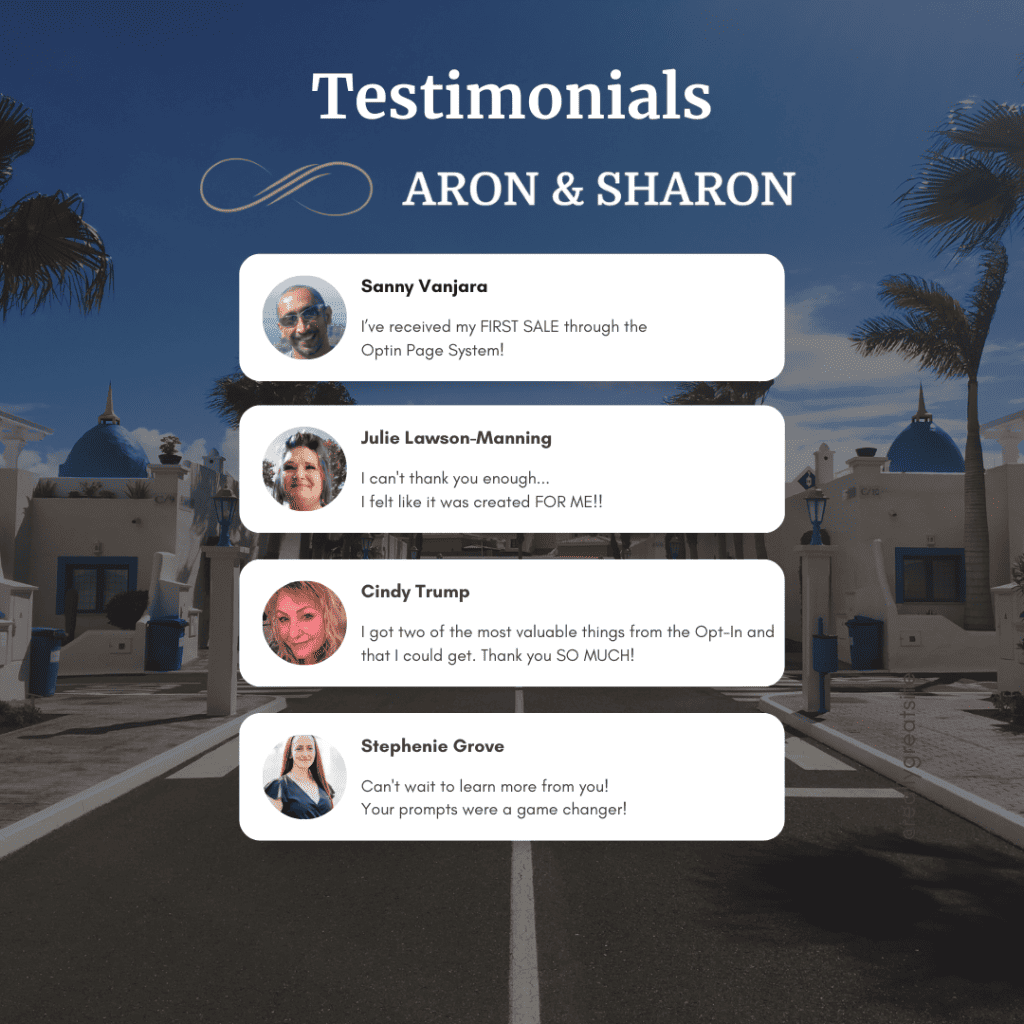
Importance of A/B testing and data analysis:
A/B testing is a powerful technique that allows you to compare two versions of your landing page to determine which one performs better in terms of conversion rate. By testing different elements, such as headlines, call-to-action buttons, or form fields, you can identify the most effective variations and make data-driven decisions to optimize your landing page.
Data analysis is crucial for understanding visitor behavior and identifying areas for improvement. By analyzing metrics such as bounce rate, time on page, or conversion rate, you can gain insights into how visitors interact with your landing page and identify potential bottlenecks or areas of friction.
According to a study by Econsultancy, companies that implement A/B testing and data-driven optimization are more likely to see an increase in conversion rates. In fact, 71% of companies that exceeded their revenue goals had a structured approach to conversion rate optimization.
Strategies for improving conversion rates:
There are several strategies you can implement to improve the conversion rate of your email capture landing page:
- Streamline the user journey: Ensure that the path from the initial click to the submission of the email capture form is clear and intuitive. Minimize distractions and guide visitors towards the desired action.
- Create a sense of urgency: Use persuasive language and time-limited offers to create a sense of urgency and encourage visitors to take immediate action.
- Offer incentives: Provide visitors with a compelling reason to provide their email address, such as exclusive content, discounts, or free resources.
- Optimize loading speed: A slow-loading landing page can lead to high bounce rates. Optimize your page’s loading speed to ensure a smooth and seamless user experience.
- Implement trust signals: Utilize social proof, such as testimonials, reviews, or trust badges, to build trust and credibility with your visitors.
Utilizing social proof and testimonials:
Social proof is a powerful psychological phenomenon that influences people’s behavior. By showcasing social proof on your email capture landing page, you can build trust and credibility, increasing the likelihood of visitors providing their email addresses.
Consider incorporating the following types of social proof:
- Testimonials: Display testimonials from satisfied customers who have benefited from your offerings. Include their name, photo, and a brief statement about their positive experience.
- Reviews and ratings: If applicable, showcase positive reviews and ratings from reputable sources or platforms.
- Client logos: If you have worked with well-known brands or clients, display their logos to demonstrate your credibility and establish trust.
By implementing A/B testing, analyzing data, employing conversion rate optimization strategies, and utilizing social proof and testimonials, you can optimize your email capture landing page for maximum conversion and drive valuable leads for your affiliate marketing efforts.
Integrating Email Marketing Tools
Integrating email marketing tools into your affiliate marketing strategy is essential for effectively managing and nurturing your email list. Email marketing platforms provide a range of features and functionalities that can streamline your email campaigns, automate processes, and personalize your communication with subscribers. In this section, we will provide an overview of popular email marketing platforms, discuss setting up automated email sequences, and explore personalization and segmentation techniques.
Overview of popular email marketing platforms:
There are several email marketing platforms available that cater to the needs of affiliate marketers. These platforms offer various features, such as email campaign management, list segmentation, automation, analytics, and more. Here are some popular email marketing platforms:
Email Marketing Platform
Email Marketing Platform Description Mailchimp A user-friendly platform with a range of features suitable for beginners and small businesses. Constant Contact An all-in-one platform that offers email marketing, automation, and e-commerce integration. AWeber A platform known for its reliable deliverability and comprehensive email marketing features. GetResponse An all-in-one marketing platform that includes email marketing, automation, and landing page creation. ConvertKit A platform designed for creators and bloggers, offering advanced automation and segmentation capabilities. Each platform has its own strengths and features, so it’s important to choose one that aligns with your specific needs and budget.
Setting up automated email sequences:
Automated email sequences allow you to deliver targeted and timely messages to your subscribers based on their actions or specific triggers. These sequences can be set up to welcome new subscribers, nurture leads, promote products or services, and more.
When setting up automated email sequences, consider the following steps:
- Define the goals and objectives of your email sequence.
- Create a series of emails that provide value and guide subscribers through the desired journey.
- Set up triggers or conditions that initiate the automated sequence, such as subscribing to a specific list or completing a purchase.
- Monitor and analyze the performance of your automated emails to make data-driven improvements.
By leveraging automated email sequences, you can deliver relevant and personalized content to your subscribers, increasing engagement and conversions.
Personalization and segmentation techniques:
Personalization and segmentation are powerful techniques that allow you to tailor your email communication to the specific interests and preferences of your subscribers.
Personalization involves using dynamic content and variables to address subscribers by their name, customize email content based on their past interactions, and create a more personalized experience.
Segmentation, on the other hand, involves dividing your email list into smaller segments based on specific criteria, such as demographics, interests, or purchase history. By segmenting your list, you can send targeted and relevant emails to each segment, increasing the chances of engagement and conversions.
By integrating email marketing tools, setting up automated email sequences, and utilizing personalization and segmentation techniques, you can effectively manage and nurture your email list, delivering targeted and engaging content to your subscribers.
Driving Traffic to Your Landing Page
Once you have created an effective email capture landing page, the next step is to drive traffic to it. Without a steady stream of visitors, your landing page won’t be able to fulfill its purpose of capturing email addresses and generating leads. In this section, we will explore various marketing channels to promote your landing page, strategies for increasing organic traffic, and paid advertising options for affiliate marketers.
Utilizing various marketing channels to promote the landing page:
There are numerous marketing channels you can leverage to promote your email capture landing page and attract visitors. Here are some effective channels to consider:
Marketing Channel
Marketing Channel Description Social Media Utilize platforms like Facebook, Instagram, Twitter, and LinkedIn to share your landing page and engage with your target audience. Content Marketing Create valuable and informative content, such as blog posts, videos, or podcasts, that link back to your landing page. Search Engine Optimization (SEO) Optimize your landing page for relevant keywords and improve its visibility in search engine results. Email Marketing Promote your landing page to your existing email subscribers and encourage them to share it with their network. Influencer Marketing Collaborate with influencers in your niche to promote your landing page to their followers. By utilizing a combination of these marketing channels, you can reach a wider audience and drive targeted traffic to your landing page.
Strategies for increasing organic traffic:
Increasing organic traffic to your landing page is crucial for long-term success. Here are some strategies to boost organic traffic:
- Keyword Research: Conduct thorough keyword research to identify relevant keywords and incorporate them into your landing page content.
- Content Optimization: Optimize your landing page content with relevant keywords, meta tags, and headings to improve its visibility in search engine results.
- Link Building: Build high-quality backlinks to your landing page from reputable websites to improve its authority and search engine rankings.
- Guest Blogging: Contribute guest posts to industry-related blogs and include links to your landing page within the content.
- Social Sharing: Encourage visitors to share your landing page on social media platforms to increase its visibility and reach.
By implementing these strategies, you can attract organic traffic to your landing page and increase the chances of capturing valuable leads.
Paid advertising options for affiliate marketers:
Paid advertising can be an effective way to drive targeted traffic to your landing page. Here are some paid advertising options for affiliate marketers:
- Pay-Per-Click (PPC) Advertising: Run PPC campaigns on platforms like Google Ads or Bing Ads to display targeted ads and drive traffic to your landing page.
- Social Media Advertising: Utilize social media advertising platforms, such as Facebook Ads or Instagram Ads, to reach your target audience and promote your landing page.
- Native Advertising: Use native advertising platforms like Taboola or Outbrain to display sponsored content that directs users to your landing page.
When using paid advertising, it’s important to carefully target your audience, create compelling ad copy, and monitor the performance of your campaigns to ensure a positive return on investment.

By utilizing various marketing channels, implementing strategies to increase organic traffic, and exploring paid advertising options, you can drive targeted traffic to your email capture landing page and maximize the number of valuable leads for your affiliate marketing efforts.
Measuring Success and Making Improvements
Measuring the success of your email capture landing page is crucial for optimizing its performance and maximizing the effectiveness of your affiliate marketing efforts. By tracking key metrics, analyzing data, and making data-driven decisions, you can continuously improve your landing page and drive better results. In this section, we will explore the importance of tracking key metrics, making data-driven decisions, and the continuous testing and refinement of your landing page.
Tracking key metrics and analyzing data:
Tracking key metrics allows you to gain insights into the performance of your email capture landing page and understand how visitors are interacting with it. By analyzing data, you can identify areas of improvement and make informed decisions to optimize your landing page.
Here are some key metrics to track:
Metric Description Conversion Rate The percentage of visitors who provide their email address on your landing page. Bounce Rate The percentage of visitors who leave your landing page without taking any action. Click-Through Rate (CTR) The percentage of visitors who click on a specific element, such as a call-to-action button. Time on Page The average amount of time visitors spend on your landing page. Conversion Funnel The steps visitors take from landing on your page to completing the desired action. By tracking these metrics, you can gain valuable insights into the performance of your landing page and identify areas for improvement.
Making data-driven decisions to optimize performance:
Once you have collected and analyzed data from your landing page, it’s important to make data-driven decisions to optimize its performance. Use the insights gained from tracking key metrics to identify areas that need improvement and implement changes accordingly.
For example, if you notice a high bounce rate, you may need to improve the clarity of your messaging or the design of your landing page. If your conversion rate is low, you may need to optimize your call-to-action or simplify your lead capture form.
By making data-driven decisions, you can continuously refine your landing page and improve its effectiveness in capturing email addresses and driving conversions.
Continuous testing and refinement of the landing page:
Testing is an essential part of optimizing your email capture landing page. By conducting A/B tests and experimenting with different elements, you can identify the most effective variations and make data-driven improvements.
Here are some elements you can test:
- Headlines and subheadings: Test different variations to see which ones resonate best with your audience.
- Call-to-action buttons: Experiment with different colors, text, or placement to determine the most effective call-to-action.
- Form fields: Test different form field layouts or the number of fields to minimize friction and increase conversions.
- Visuals: Try different images or videos to see which ones capture the attention of your visitors.
By continuously testing and refining your landing page, you can optimize its performance and ensure that it consistently delivers the best results for your affiliate marketing efforts.
By tracking key metrics, making data-driven decisions, and continuously testing and refining your landing page, you can optimize its performance, increase conversions, and drive better results for your affiliate marketing campaigns.
Frequently Asked Questions (FAQ)
- How can I encourage visitors to provide their email addresses? There are several strategies you can employ to encourage visitors to provide their email addresses:
- Create a compelling value proposition that clearly communicates the benefits of subscribing to your email list.
- Offer incentives such as exclusive content, discounts, or free resources in exchange for their email address.
- Use persuasive copywriting techniques to highlight the value they will receive by subscribing.
- Ensure that your lead capture form is easy to use, visually appealing, and prominently displayed on your landing page.
- Build trust and credibility by showcasing social proof, such as testimonials or reviews, to demonstrate the positive experiences of your existing subscribers.
- What is the ideal length for an email capture form? The ideal length for an email capture form is typically short and concise. Asking for too much information can create friction and deter visitors from completing the form. In most cases, asking for the visitor’s name and email address is sufficient. However, depending on your specific goals and target audience, you may choose to include additional fields such as company name or phone number. It’s important to strike a balance between gathering necessary information and minimizing barriers to entry.
- Should I offer incentives to increase email sign-ups? Offering incentives can be an effective strategy to increase email sign-ups. Incentives provide an extra motivation for visitors to provide their email addresses. Consider offering exclusive content, such as free books, guides, or video tutorials, that align with the interests of your target audience. You can also offer discounts, free trials, or access to a members-only community. Experiment with different incentives to see what resonates best with your audience and drives the highest conversion rate.
- How often should I send emails to my subscribers? The frequency of your email sends depends on your specific audience and the nature of your content. It’s important to strike a balance between staying top-of-mind and avoiding overwhelming your subscribers. Sending emails too frequently can lead to unsubscribes or a decrease in engagement. On the other hand, sending emails too infrequently may cause your subscribers to forget about you. Consider segmenting your email list based on subscriber preferences and interests, and allow subscribers to choose their preferred frequency of emails. Regularly monitor your email analytics to gauge the engagement levels and adjust your sending frequency accordingly.
- Can I use pop-ups on my email capture landing page? Using pop-ups on your email capture landing page can be an effective way to capture the attention of visitors and increase conversions. However, it’s important to use them strategically and considerately. Here are some best practices for using pop-ups:
- Ensure that the pop-up is relevant to the content on the landing page and provides value to the visitor.
- Set a delay before the pop-up appears to give visitors time to engage with the landing page content.
- Allow visitors to easily close the pop-up if they are not interested.
- Avoid using intrusive or aggressive pop-ups that disrupt the user experience.
- Test different variations of pop-ups to determine the most effective design and messaging.
-
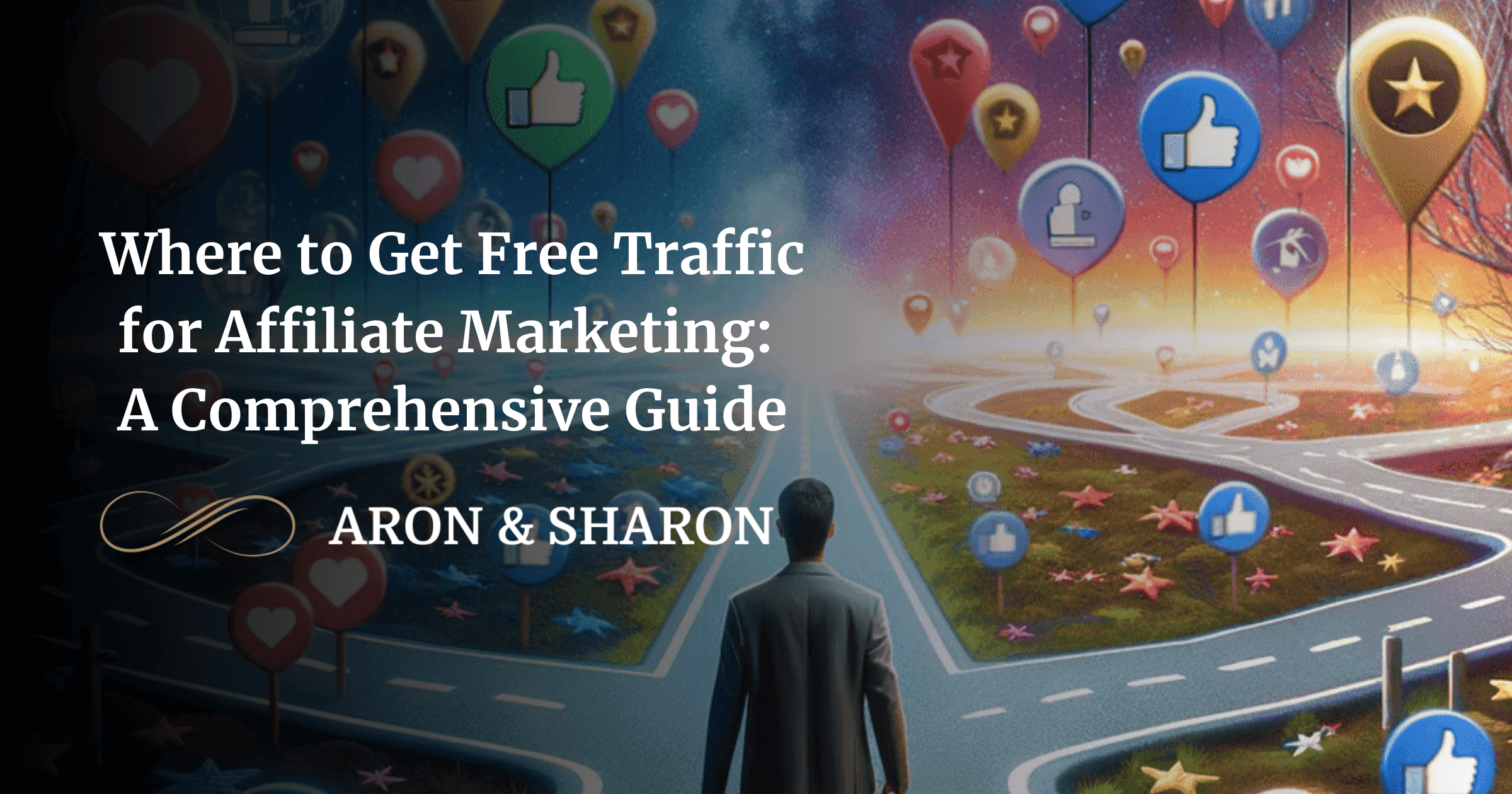
Where to Get Free Traffic for Affiliate Marketing:
A Comprehensive GuideOur most asked question these days from new affiliate marketers is “where to get free traffic for affiliate marketing”.
Affiliate marketing is a popular online business model where individuals or companies promote products or services on behalf of a merchant and earn a commission for every sale or lead generated through their efforts. It is a win-win situation for both the affiliate marketer and the merchant, as the marketer gets to earn passive income while the merchant benefits from increased sales and brand exposure.
One of the key factors that determine the success of an affiliate marketing campaign is the ability to drive targeted traffic to the affiliate offers. This is where the term “where to get free traffic for affiliate marketing” becomes crucial. Traffic refers to the number of visitors or potential customers who visit a website or landing page. The more targeted traffic an affiliate marketer can attract, especially free traffic, the higher the chances of generating conversions and earning commissions.
While there are various methods to drive traffic to affiliate offers, it is essential to consider the cost-effectiveness of these methods. This brings us back to the question of “where to get free traffic for affiliate marketing.” Free traffic refers to the organic or unpaid visitors that come to a website or landing page through various channels. By leveraging free traffic sources, affiliate marketers can reduce their marketing costs and increase their profit margins.
The purpose of this comprehensive guide is not only to provide a general overview but specifically to delve into where to get free traffic for affiliate marketing campaigns. By implementing the techniques discussed in this guide, affiliate marketers can maximize their reach, increase their conversions, and ultimately boost their earnings.
Discover the traffic secrets we have to offer in this article, and leave a comment with your thoughts :).
Table of Contents
Where to get free traffic for affiliate marketing? Social Media Platforms!
Social media platforms have revolutionized the way we connect, communicate, and consume information. With billions of active users worldwide, these platforms offer immense potential for affiliate marketers to drive free traffic to their affiliate offers.
One of the key benefits of utilizing social media platforms for affiliate marketing is the ability to reach a vast audience. Platforms such as Facebook, Instagram, Twitter, and LinkedIn have millions of active users who are actively seeking information, entertainment, and products. By strategically leveraging these platforms, affiliate marketers can tap into this massive pool of potential customers.
Here are some benefits of utilizing social media platforms for driving free traffic to affiliate offers:
- Wide Reach: Social media platforms allow affiliate marketers to reach a global audience. With users from different demographics and interests, there is a high chance of finding potential customers who are interested in the affiliate offers.
- Engagement Opportunities: Social media platforms provide various engagement opportunities for affiliate marketers. They can create engaging content such as posts, videos, and stories to capture the attention of their target audience. By encouraging likes, comments, and shares, affiliate marketers can increase their reach and visibility.
- Targeted Advertising: Many social media platforms offer advanced targeting options for advertising. Affiliate marketers can utilize these options to narrow down their audience based on demographics, interests, and behaviors. This ensures that the affiliate offers are shown to the most relevant audience, increasing the chances of conversions.
- Hashtag Utilization: Hashtags play a crucial role in social media platforms as they help categorize and discover content. Affiliate marketers can research and use relevant hashtags in their posts to increase visibility and reach a wider audience. By including popular and niche-specific hashtags, they can attract users who are actively searching for related content.
- Leveraging Social Media Algorithms: Each social media platform has its own algorithm that determines the visibility of content. By understanding and leveraging these algorithms, affiliate marketers can increase the organic reach of their posts. This can be achieved by consistently posting high-quality content, engaging with the audience, and utilizing features such as live videos and stories.

Blogging and Content Marketing
Blogging and content marketing have emerged as powerful strategies for attracting organic traffic to affiliate offers. By creating valuable and informative content, affiliate marketers can establish themselves as authorities in their niche and attract a loyal audience.
One of the key advantages of blogging and content marketing is the ability to provide valuable information to the target audience. By addressing their pain points, answering their questions, and offering solutions, affiliate marketers can build trust and credibility. This, in turn, increases the chances of visitors converting into customers.
Here are some reasons why blogging and content marketing are essential for driving free traffic to affiliate offers:
- Attracting Organic Traffic: Blogging allows affiliate marketers to optimize their content for search engines, making it easier for potential customers to find them. By conducting keyword research and incorporating relevant keywords into their blog posts, affiliate marketers can increase their visibility in search engine results pages (SERPs) and attract organic traffic.
- Creating Valuable Content: Content marketing revolves around creating valuable and informative content that addresses the needs and interests of the target audience. By providing valuable insights, tips, and advice, affiliate marketers can position themselves as trusted sources of information. This not only attracts traffic but also encourages visitors to engage with the content and take desired actions.
- Optimizing for Search Engines: To maximize the visibility of their blog posts, affiliate marketers should optimize them for search engines. This involves using relevant meta tags, optimizing headings and subheadings, and ensuring the content is well-structured and easy to read. Additionally, affiliate marketers can incorporate internal and external links to enhance the SEO value of their blog posts.
- Incorporating Affiliate Links: While creating valuable content, affiliate marketers can naturally incorporate affiliate links within their blog posts. It is important to ensure that these links are relevant to the content and add value to the reader. By strategically placing affiliate links, affiliate marketers can increase the chances of visitors clicking on them and making a purchase.
- Guest Blogging and Collaboration: Affiliate marketers can expand their reach and attract new audiences by guest blogging on relevant websites or collaborating with influencers in their industry. By leveraging the existing audience of these platforms, affiliate marketers can drive free traffic to their own blog or landing page. This strategy also helps in building relationships and establishing authority in the industry.
Search Engine Optimization (SEO)
Search Engine Optimization (SEO) plays a crucial role in driving organic traffic to affiliate offers. By optimizing their website and content for search engines, affiliate marketers can increase their visibility in search results and attract targeted visitors who are actively searching for relevant information or products.
Here are some key aspects of SEO that affiliate marketers should focus on to drive free traffic to their affiliate offers:
- Keyword Research: Keyword research is the foundation of SEO. By identifying the keywords and phrases that potential customers are using to search for information or products related to the affiliate offers, marketers can optimize their content to match these search queries. Tools like Google Keyword Planner, SEMrush, and Ahrefs can help in finding relevant keywords with high search volume and low competition.
- On-Page Optimization: On-page optimization involves optimizing various elements on a webpage to make it more search engine-friendly. This includes optimizing the title tags, meta descriptions, headings, and URL structures. By incorporating relevant keywords naturally into these elements, affiliate marketers can improve their chances of ranking higher in search results.
- Website Content: High-quality and informative content is essential for SEO. Affiliate marketers should focus on creating valuable content that addresses the needs and interests of their target audience. By providing comprehensive and well-researched information, marketers can attract organic traffic and establish themselves as authorities in their niche.
- Link Building: Building high-quality backlinks is an important aspect of SEO. Backlinks are links from other websites that point to your website. Search engines consider backlinks as a vote of confidence, indicating that your website is trustworthy and relevant. Affiliate marketers can reach out to relevant websites, collaborate with influencers, or create shareable content to attract backlinks.
- Local SEO Strategies: For affiliate marketers targeting a specific geographic location, implementing local SEO strategies is crucial. This involves optimizing the website for local keywords, creating a Google My Business listing, and getting positive reviews from local customers. Local SEO helps in attracting targeted traffic from the specific location, increasing the chances of conversions.
Email Marketing
Email marketing is a powerful strategy for driving targeted traffic to affiliate offers. By building an email list and nurturing subscribers, affiliate marketers can establish a direct line of communication with their audience and promote their affiliate offers effectively.
Here are some key aspects of email marketing that affiliate marketers should consider:
- Potential of Email Marketing: Email marketing allows affiliate marketers to reach their audience directly in their inbox. With an estimated 3.9 billion email users worldwide, email marketing offers a vast potential for driving targeted traffic to affiliate offers. According to a study by DMA, for every $1 spent on email marketing, the average return on investment (ROI) is $42.
- Building an Email List: Building an email list is crucial for successful email marketing. Affiliate marketers can encourage website visitors to subscribe to their email list by offering valuable incentives such as exclusive content, discounts, or freebies. By capturing the email addresses of interested individuals, marketers can nurture them and convert them into customers over time.
- Nurturing Subscribers: Nurturing subscribers involves building a relationship with them through regular and valuable email communication. Affiliate marketers can provide useful information, tips, and recommendations related to their niche. By consistently delivering value, marketers can establish trust and credibility, increasing the chances of subscribers engaging with the affiliate offers.
- Compelling Email Campaigns: Creating compelling email campaigns is essential for driving traffic to affiliate offers. Marketers should focus on crafting attention-grabbing subject lines, engaging content, and clear call-to-actions. By utilizing persuasive copywriting techniques and incorporating visuals, such as images or videos, marketers can increase the click-through rates and conversions.
- Utilizing Automation: Automation tools can streamline the email marketing process and save time for affiliate marketers. By setting up automated email sequences, marketers can deliver targeted content based on subscriber behavior, such as welcome emails, abandoned cart reminders, or personalized recommendations. Automation helps in nurturing subscribers and driving them towards the affiliate offers.
- Segmenting the Email List: Segmenting the email list involves dividing subscribers into specific groups based on their interests, demographics, or behavior. By segmenting the list, affiliate marketers can send more personalized and relevant content to each group. This increases the engagement and conversion rates, as subscribers receive content that is tailored to their specific needs.
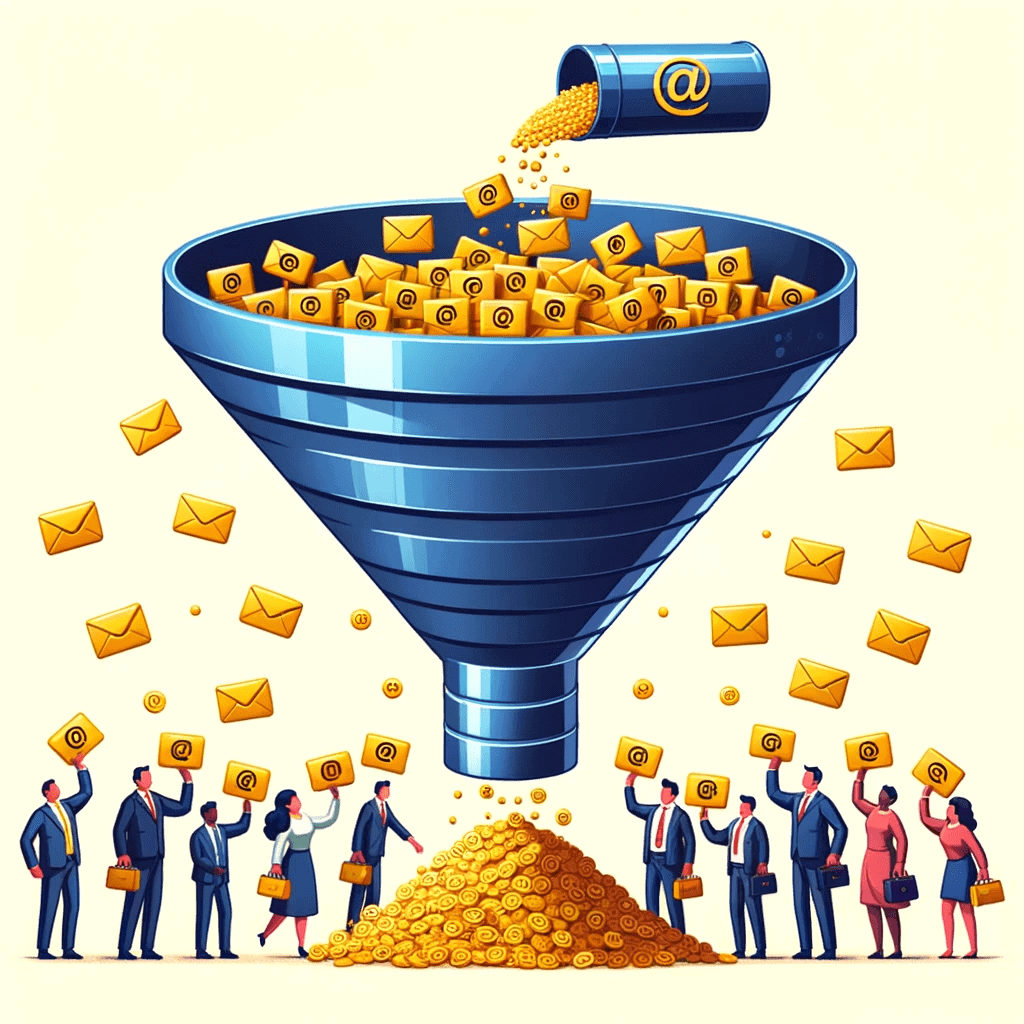
Online Communities and Forums
Online communities and forums provide valuable opportunities for affiliate marketers to drive targeted traffic to their affiliate offers. These platforms allow marketers to connect with like-minded individuals, share valuable insights, and establish themselves as authorities in their niche.
Here are some key aspects of leveraging online communities and forums for driving free traffic:
- Value of Online Communities: Online communities and forums are hubs of knowledge and discussions related to specific topics or industries. By actively participating in these communities, affiliate marketers can tap into a pool of potential customers who are actively seeking information and recommendations. According to a study by Nielsen, 92% of consumers trust recommendations from individuals over brands.
- Providing Valuable Insights: To drive traffic from online communities, affiliate marketers should focus on providing valuable insights and solutions to community members. By sharing their expertise and offering helpful advice, marketers can establish themselves as trusted sources of information. This builds credibility and encourages community members to visit their websites or click on their affiliate links for further information.
- Building Relationships: Building relationships within online communities is crucial for driving traffic. By engaging in conversations, responding to questions, and offering support, affiliate marketers can build trust and rapport with community members. This increases the likelihood of community members visiting their websites or sharing their content with others.
- Establishing Authority: Consistently providing valuable insights and demonstrating expertise helps affiliate marketers establish authority within online communities. By positioning themselves as knowledgeable and trustworthy individuals, marketers can attract more attention and drive traffic to their affiliate offers. This can be achieved by sharing case studies, success stories, or industry-specific tips.
- Subtly Promoting Affiliate Offers: While participating in online communities, affiliate marketers should be mindful of community guidelines and avoid spammy behavior. Instead of directly promoting their affiliate offers, marketers can subtly incorporate relevant links or mention their offers when it adds value to the conversation. This approach ensures that the promotion feels natural and genuine.
Frequently Asked Questions (FAQ)
1. How long does it take to see results from free traffic methods?
The time it takes to see results from free traffic methods can vary depending on various factors such as the quality of your content, the competitiveness of your niche, and the consistency of your efforts. Generally, it takes time to build organic traffic as it relies on factors like search engine indexing, content promotion, and audience engagement. It is important to have patience and consistently implement effective strategies to see significant results.
2. Can I use multiple traffic sources simultaneously?
Absolutely! In fact, using multiple traffic sources simultaneously is a recommended approach. Diversifying your traffic sources helps to mitigate risks and maximize your reach. By leveraging different platforms and strategies such as social media, blogging, SEO, and email marketing, you can tap into various audiences and increase your chances of driving targeted traffic to your affiliate offers.
3. Are there any risks associated with free traffic methods?
While free traffic methods can be highly effective, it is important to be aware of potential risks. Some risks include changes in search engine algorithms, which can impact your organic rankings, and the possibility of low-quality traffic that may not convert into sales. It is crucial to stay updated with industry trends, adapt your strategies accordingly, and focus on attracting high-quality, targeted traffic to minimize these risks.
4. How can I track the effectiveness of my free traffic sources?
Tracking the effectiveness of your free traffic sources is essential to measure the success of your efforts and make data-driven decisions. You can utilize various analytics tools such as Google Analytics, which provides valuable insights into your website’s traffic sources, user behavior, and conversions. By setting up goals, tracking key metrics, and analyzing the data, you can identify which traffic sources are driving the most engagement and conversions.
5. Can I combine free traffic methods with paid advertising for better results?
Absolutely! Combining free traffic methods with paid advertising can be a powerful strategy to boost your results. Paid advertising allows you to reach a wider audience and drive targeted traffic to your affiliate offers more quickly. By strategically investing in paid advertising while simultaneously implementing free traffic methods, you can amplify your reach, increase brand visibility, and drive more conversions.
Want more tips & tricks like this? Subscribe to the Aron & Sharon Newsletter FOR FREE!
-
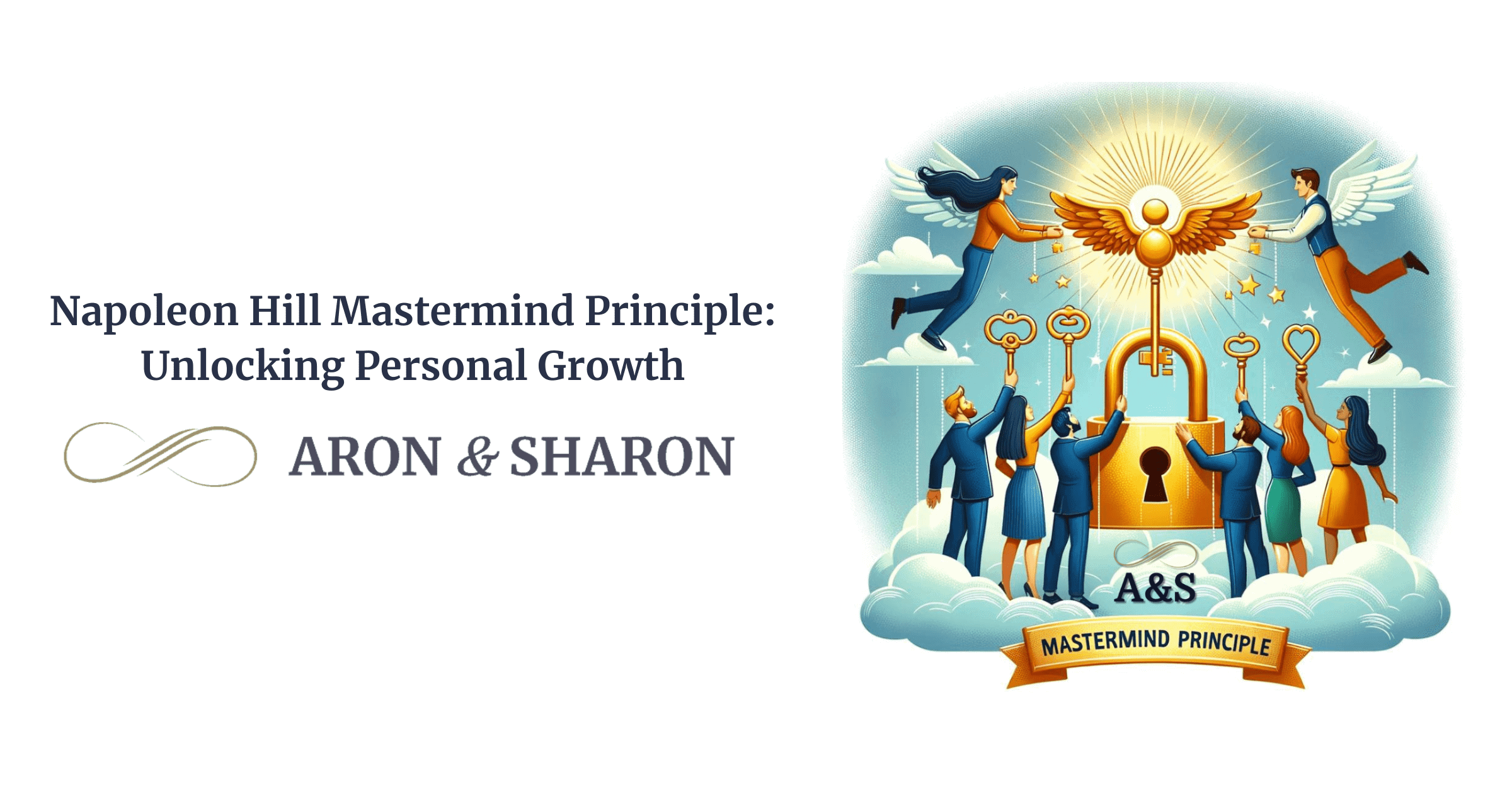
Napoleon Hill Mastermind Principle:
Unlocking Personal GrowthHave you heard of the Napoleon Hill Mastermind principle? Napoleon Hill Books are regarded as some of the best-selling personal development books, but many people miss this key principle: The Mastermind.
Personal growth is a lifelong journey of self-improvement and self-discovery. It has become increasingly important to invest in our personal development to thrive and succeed. One of the most influential figures in the field of personal growth is Napoleon Hill, who introduced the concept of mastermind principles in his renowned book “Think and Grow Rich.”
The Napoleon Hill Mastermind principle provides a roadmap for individuals to unlock their full potential and achieve personal growth. By understanding and applying these principles, you can transform your mindset, set clear goals, cultivate a positive attitude, and form powerful alliances that propel you toward success.
Table of Contents
Napoleon Hill Mastermind: Understanding The Principles
A mastermind group is a collective of like-minded individuals who come together to support and inspire each other’s personal and professional growth. Napoleon Hill believed that the power of a mastermind group lies in the collective wisdom and collaboration of its members.
In his book “Think and Grow Rich,” Napoleon Hill outlined several key principles that form the foundation of personal growth. These principles include definiteness of purpose, positive mental attitude, applied faith, going the extra mile, and the mastermind alliance.
Successful individuals from various fields have applied these mastermind principles to achieve remarkable personal growth. For example, Oprah Winfrey, one of the most influential media personalities, attributes her success to the power of a mastermind group. By surrounding herself with knowledgeable and supportive individuals, she was able to overcome challenges and reach new heights.

Principle 1: Definiteness of Purpose
Having a clear and specific purpose is crucial for personal growth. Napoleon Hill emphasized the importance of defining your goals and aspirations with precision. When you have a definite purpose, you gain clarity and direction, which enables you to make focused decisions and take purposeful actions.
To identify and articulate your personal goals, reflect on your passions, values, and aspirations. Write down your goals in a specific and measurable manner. For instance, instead of saying “I want to be successful,” define what success means to you and set specific milestones to achieve it.
By having a definiteness of purpose, you align your thoughts, actions, and beliefs towards your goals, increasing the likelihood of personal growth and success.
Principle 2: Positive Mental Attitude
A positive mental attitude is a powerful catalyst for personal growth. Napoleon Hill firmly believed in the influence of positive thinking on success. By maintaining a positive mindset, you can overcome obstacles, stay motivated, and attract opportunities that align with your goals.
Cultivating a positive mental attitude involves practicing gratitude, affirmations, and visualization. Surround yourself with positive influences, such as uplifting books, inspiring podcasts, and supportive individuals. Focus on solutions rather than dwelling on problems, and embrace challenges as opportunities for growth.
Remember, your thoughts shape your reality. By adopting a positive mental attitude, you can unlock your personal growth potential and create a fulfilling life.
Principle 3: Applied Faith
Applied faith is the belief in your abilities and the unwavering trust in the attainment of your goals. Napoleon Hill emphasized the importance of having faith in yourself and your journey toward personal growth.
Applied faith involves visualizing your goals as already achieved, affirming your capabilities, and taking inspired action. It requires stepping out of your comfort zone and embracing uncertainty with confidence. By having faith in yourself, you can overcome self-doubt and push through challenges that come your way.
Many successful individuals attribute their personal growth to applied faith. For example, Thomas Edison, the inventor of the light bulb, faced numerous failures before achieving success. His unwavering faith in his abilities and his belief in the power of persistence led him to revolutionize the world.
Principle 4: Going the Extra Mile
Going the extra mile is a principle that emphasizes the importance of continuous improvement and exceeding expectations. Napoleon Hill believed that personal growth requires a commitment to constant learning, innovation, and surpassing ordinary efforts.
By going above and beyond what is expected, you differentiate yourself from others and create opportunities for personal growth. This principle encourages you to embrace challenges, take calculated risks, and continuously seek ways to improve yourself and your work.
Successful individuals who have achieved remarkable personal growth have often gone the extra mile. For instance, Elon Musk, the visionary entrepreneur behind Tesla and SpaceX, is known for his relentless pursuit of innovation and pushing the boundaries of what is possible.
Principle 5: Mastermind Alliance
The mastermind alliance is a cornerstone of personal growth according to Napoleon Hill. It involves forming alliances and collaborating with like-minded individuals who share similar goals and values.
By joining or creating a mastermind alliance, you gain access to diverse perspectives, knowledge, and support. The collective wisdom and accountability within a mastermind group can propel toward personal growth and success.
To build a successful mastermind alliance, seek individuals who are committed to personal growth, possess complementary skills, and share a common vision. Foster an environment of trust, open communication, and mutual support. Regularly meet or connect with your mastermind group to share insights, set goals, and hold each other accountable.
Personal growth is a transformative journey that requires dedication, self-reflection, and the application of proven principles. Napoleon Hill’s mastermind principles provide a roadmap for unlocking personal growth and achieving success.
By understanding and applying the mastermind principles of definiteness of purpose, positive mental attitude, applied faith, going the extra mile, and forming a mastermind alliance, you can unleash your full potential and create a life of fulfillment and abundance.
Embrace these principles, surround yourself with supportive individuals, and take consistent action towards your goals. Start your growth journey today and unlock the extraordinary possibilities that await you.

Frequently Asked Questions (FAQ)
What is the mastermind principle?
The Napoleon Hill Mastermind principle is the concept of forming a group of like-minded individuals who come together to support and inspire each other’s personal and professional growth. It involves harnessing the collective wisdom and collaboration of the group to achieve common goals.
How can I find or join a mastermind group?
Finding or joining a mastermind group can be a transformative step in your personal growth journey. Here are some ways to find or join a mastermind group:
- Network within your industry or community: Attend conferences, seminars, or workshops related to your field of interest. Engage with like-minded individuals and inquire about existing mastermind groups.
- Online platforms and forums: Join online communities or platforms dedicated to personal growth and professional development. These platforms often have sections or groups specifically for mastermind groups.
- Professional organizations: Explore professional organizations or associations in your industry. Many of these organizations facilitate mastermind groups or can provide guidance on how to join one.
- Create your own group: If you can’t find a suitable mastermind group, consider creating your own. Reach out to individuals who share similar goals and values, and invite them to form a mastermind alliance.
Can the mastermind principles be applied to personal relationships?
Absolutely! The Napoleon Hill Mastermind principles can be applied to personal relationships as well. In fact, forming a mastermind alliance within your personal life can have a profound impact on your growth and well-being.
Consider the following ways to apply the mastermind principles to personal relationships:
- Supportive network: Surround yourself with individuals who uplift and inspire you. Seek out friends, family members, or mentors who share your values and support your personal growth journey.
- Accountability partners: Find someone who can hold you accountable for your personal goals and aspirations. This could be a close friend, a family member, or a trusted mentor.
- Collaborative growth: Engage in open and honest conversations with your loved ones about personal growth. Share your goals, challenges, and aspirations, and encourage them to do the same. Together, you can support each other’s growth and celebrate achievements.
Are there any success stories of individuals who have applied Napoleon Hill’s mastermind principles?
Yes, there are numerous success stories of individuals who have applied Napoleon Hill mastermind principles and achieved remarkable personal growth. Here are a few examples:
Individual Field Achievements Oprah Winfrey Media and Entertainment Built a media empire, became one of the most influential personalities, and created a platform for inspiring and empowering millions of people. Elon Musk Entrepreneurship and Technology Founded multiple successful companies, including Tesla and SpaceX, revolutionizing the automotive and space industries. Richard Branson Business and Philanthropy Built the Virgin Group, a conglomerate of more than 400 companies, and dedicated his resources to various philanthropic initiatives. These individuals attribute their success to the power of a mastermind group and the principles outlined by Napoleon Hill. By surrounding themselves with supportive and like-minded individuals, they were able to overcome challenges, gain valuable insights, and achieve extraordinary personal growth.
How long does it take to see results from implementing these principles?
The timeline for seeing results from implementing the Napoleon Hill mastermind principle varies for each individual. Personal growth is a continuous process that requires commitment, consistency, and patience.
While some individuals may experience immediate shifts in their mindset and actions, others may take longer to see tangible results. It is important to remember that personal growth is a journey, and the focus should be on progress rather than immediate outcomes.
By consistently applying the mastermind principles and staying dedicated to your personal growth journey, you will gradually witness positive changes in various aspects of your life.